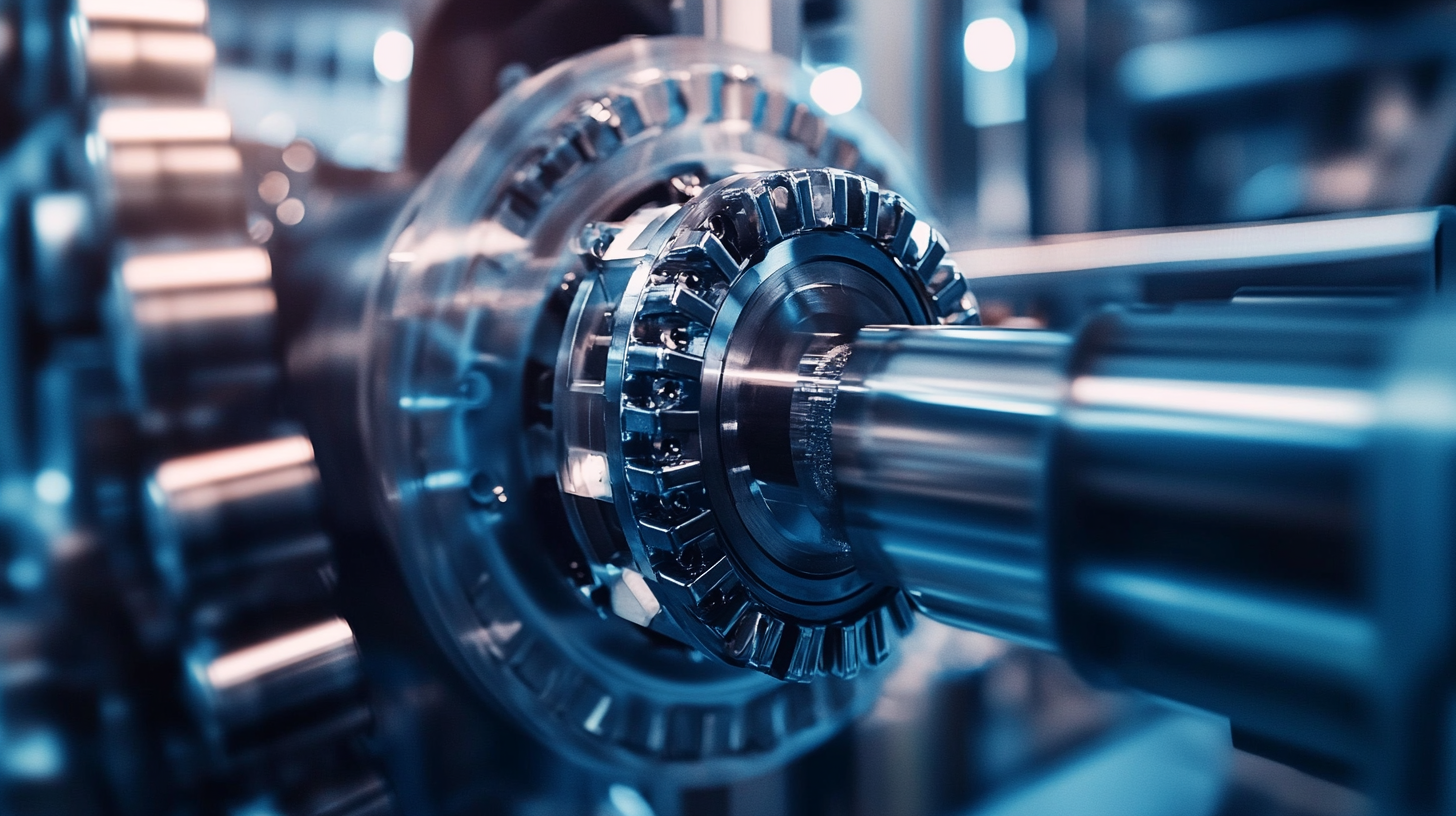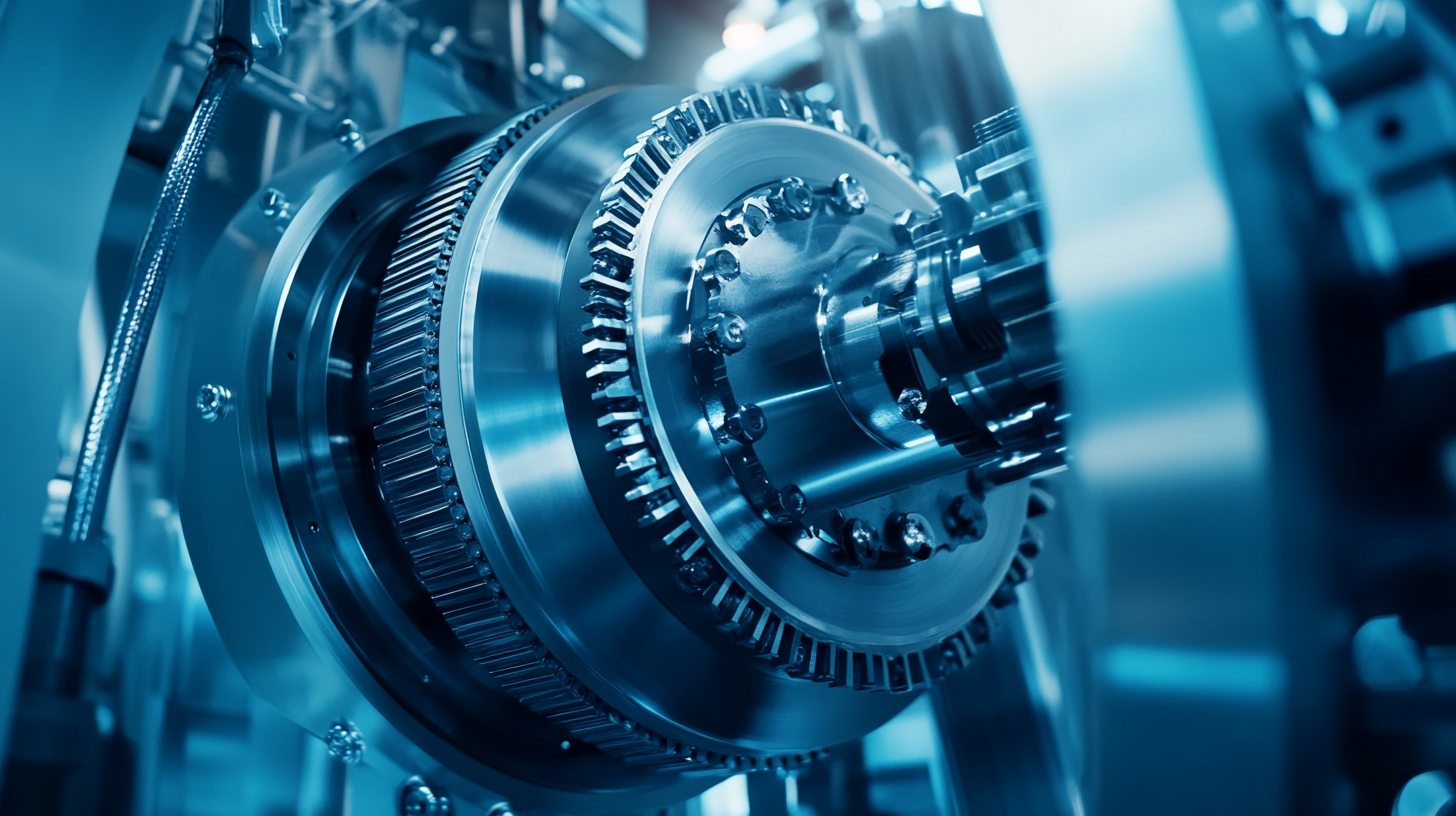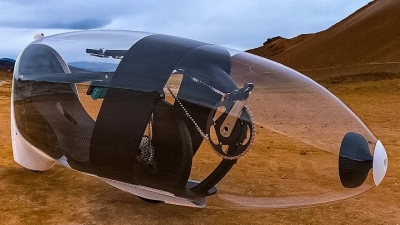2025 Hydraulic Drives Trends and 7 Key Innovations Shaping the Future
In the rapidly evolving landscape of industrial technology, hydraulic drives are emerging as pivotal components that drive efficiency and innovation. As we look toward 2025, it is essential to examine the trends and advancements that are reshaping the future of hydraulic systems. From the integration of smart technology and IoT capabilities to the adoption of greener, more sustainable materials, the hydraulic drives industry is on the cusp of significant transformation. This blog will explore seven key innovations that are not only enhancing performance but also addressing the demands of a more connected and environmentally-conscious market. As businesses strive to optimize their operations, understanding these trends will be crucial for staying competitive in an ever-changing economic environment. Join us as we delve into the future of hydraulic drives and the innovations set to redefine their role in modern machinery and automation.

Emerging Technologies Revolutionizing Hydraulic Drive Systems
The hydraulic drives sector is on the cusp of a technological renaissance, driven by emerging innovations that are set to redefine efficiency and performance. Recent studies have highlighted that the global hydraulic systems market is estimated to reach approximately $45 billion by 2025, with a significant portion attributed to advancements in hydraulic drive technologies. Key trends include the integration of IoT technologies and smart sensors, which enable real-time monitoring and predictive maintenance, drastically reducing downtime and enhancing operational efficiency.
One of the most promising innovations is the development of electro-hydraulic systems, which combine the benefits of electric motors with hydraulic power, resulting in systems that are not only more energy-efficient but also provide superior control and responsiveness. According to a report by MarketsandMarkets, the electro-hydraulic actuator market alone is projected to grow at a CAGR of over 6% from 2020 to 2025. Additionally, the advent of advanced fluid technology, such as bio-based hydraulic fluids, offers environmental advantages while maintaining performance. These innovations signal a transformative shift in hydraulic drives, enabling industries to achieve higher productivity and sustainability in their operations.
2025 Hydraulic Drives Trends
This pie chart illustrates the key innovations shaping the future of hydraulic drive systems in 2025. The data represents the proportionate impact of each innovation on the market.
Sustainability in Hydraulic Drives: Innovations Driving Eco-Friendliness
The hydraulic drives industry is witnessing significant shifts towards sustainability, driven by innovations aimed at reducing environmental impact. With the global hydraulic pumps market projected to grow rapidly, expanding from USD 10.93 billion in 2024 at a compound annual growth rate (CAGR) of 3.9% through 2030, this momentum underscores the increasing focus on eco-friendly technologies. As industries diversify their energy sources and implement more efficient hydraulic systems, the demand for hydraulic solutions that harmonize performance with sustainability is on the rise.
Innovations such as energy-efficient hydraulic components and biodegradable fluids are at the forefront of this transformative wave, aligning operational efficiency with environmental responsibility. The push for sustainable practices in construction machinery, which significantly contributes to global CO2 emissions, emphasizes the need for these advancements. Reports indicate that the construction sector must adapt to green technologies to mitigate its environmental footprint, paving the way for a future where hydraulic drives can contribute positively to sustainable industrial growth. As these trends unfold, the hydraulic drives landscape is set to be shaped by the critical intersection of innovation and eco-friendliness.
2025 Hydraulic Drives Trends and 7 Key Innovations Shaping the Future - Sustainability in Hydraulic Drives: Innovations Driving Eco-Friendliness
| Innovation | Description | Impact on Sustainability | Year of Adoption |
|---|---|---|---|
| Eco-Friendly Fluids | Use of biodegradable hydraulic fluids that minimize environmental impact. | Reduces pollution and enhances recycling possibilities. | 2023 |
| Energy-Efficient Pumps | Pumps designed to optimize energy consumption and reduce waste. | Significantly lowers the carbon footprint of hydraulic systems. | 2024 |
| Smart Hydraulic Systems | Integration of IoT technology to monitor and optimize system performance. | Improves efficiency, reducing energy usage and emissions. | 2025 |
| Recyclable Components | Design of hydraulic components for easier disassembly and recycling. | Promotes circular economy in hydraulic system design. | 2023 |
| Hybrid Systems | Combining hydraulic systems with electric power sources for enhanced performance. | Reduces overall energy consumption and reliance on fossil fuels. | 2025 |
| Advanced Safety Features | Systems designed to minimize hydraulic failures and improve workplace safety. | Enhances worker safety, indirectly promoting sustainable operations. | 2024 |
| Modular Hydraulic Systems | Flexible designs allowing for easy upgrades and repairs. | Extends product lifespan and reduces waste. | 2025 |
Integration of IoT and Smart Technologies in Hydraulic Systems
The integration of IoT and smart technologies in hydraulic systems is set to revolutionize how various sectors operate, particularly in industries reliant on heavy machinery such as snow removal. As municipalities increasingly focus on public safety and optimizing operational efficiency, smart hydraulic systems equipped with IoT capabilities are becoming essential. These innovations not only enhance the operational capabilities of vehicles like snowplows, salt spreaders, and blowers, but also improve maintenance schedules and reduce downtime through predictive analytics.
Moreover, as technology advances, the role of communication modules in hydraulic systems cannot be overlooked. By incorporating cellular and non-cellular communication modules, hydraulic machines can share data seamlessly, providing real-time insights into system performance. This capability is crucial for fleet management, allowing for more coordinated and responsive operations in urban environments. As cities face increasing challenges from climate conditions and budget constraints, the synergy between hydraulic systems and smart technology will play a pivotal role in shaping the future of urban infrastructure and public service efficiency.
Advancements in Materials for Enhanced Hydraulic Drive Efficiency
In the rapidly evolving landscape of hydraulic drives, innovations in materials play a crucial role in enhancing efficiency. As manufacturers pour resources into research and development, we're seeing a significant shift towards lightweight, durable composites that minimize energy loss and resistance. These advancements not only provide better performance but also contribute to sustainability efforts by reducing the overall carbon footprint of hydraulic systems.
Moreover, the integration of smart materials, such as shape memory alloys and piezoelectric components, is being embraced by industry leaders. These materials respond adaptively to changes in pressure and temperature, optimizing hydraulic drive performance in real time. As technology progresses, the fusion of advanced materials with intelligent monitoring systems will pave the way for more responsive and efficient hydraulic solutions, making them indispensable in various applications ranging from construction machinery to renewable energy systems. This transformation will undoubtedly redefine standards and set new benchmarks for efficiency in the coming years.

Future Market Predictions: Hydraulic Drive Trends to Watch in 2025
As we look ahead to 2025, the hydraulic drives market is poised for significant transformations driven by innovative technologies and changing industry demands. The global hydraulic pumps market is expected to grow exponentially, increasing 17 times from 2025 to 2035 due to a rising demand for efficient hydraulic systems. This surge is attributed to a push for more sustainable and powerful solutions across various sectors, including automotive and construction.
Moreover, the fluid power industry, currently navigating challenges posed by inflation and interest rates, is anticipated to rebound in 2025. The recovery will be supported by enhancements in mobile hydraulics, which are forecasted to witness a resurgence in growth trends following a period of decline in 2024. With advancements in hydraulic valve technology driving a projected growth rate of 3.8% through 2034, key players in this space are likely to innovate further, focusing on precision and efficiency.
In parallel, the hydraulic hoses and fittings market is expected to grow at a rate of 4.36% through 2028. This growth is largely propelled by improved economic conditions, particularly in the oil and gas sectors, which reinforces the expected uptrend in hydraulic drive technologies. As these industries evolve, the innovations that emerge will undoubtedly shape the landscape of hydraulic drives in the years to come.

Related Video
-

28 Inventions of the Future that will soon be Available to Everyone
View: 1713461Channel: TechIN -

This is Future Technology | Next Generation | New Technology innovations on Another Level #robotics
View: 2004705Channel: ejunky66 -

HPC in 2025: Trends, Technologies, and Innovations Shaping the Future
View: 96Channel: CIQ


